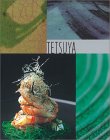|
What, No Vegemite?
Tetsuya: Recipes from Australia's Most Acclaimed Chef
Alas, the much-tormented Oscar Wilde, who spoke these words to a New York Herald reporter in 1882, never got his chance. Had he the opportunity, Oz would have no doubt taken more sublime form. Thankfully, 119 years later, Tetsuya Wakuda did, and what he gives us is arguably the handsomest publication to emerge out of Australia and onto the North American scene in recent memory ... perhaps because, gastronomically speaking, nothing (or, to be more precise, very little) in it is Australian. Go on, look as hard as you like. Hey, consult the index (there is no table of contents). Try as you may you will find nary a word of such traditional down-under fare as meat pie or pie floater or roast lamb or Pavlova. Not even carpet-bag steak, colonial goose, or macadamia nuts rate ink. The most Australian things here are some very interesting dish-by-dish recommendations for younger, low-tannin domestic wines along with comparable varietals and vintages from North America and France. So driven by aesthetics is Wakuda's work that one might emerge from a casual thumbing convinced that Testsuya is not so much a cook as a plate decorator. But that would give the work short shrift. Yes, it is conceived with cool, artistic precision to feed the eyes as much or more than the appetite. But make no mistake: what we are dealing with here is food qua art. His may not be dishes that engulf you in a soulful and comforting embrace ... and here I have in mind a deliciously aloof consommé of tomato and tea, as well as an ethereally standoffish sorbet of tomato and pepper with a tartare of marinated scampi--but, for the most part, his eye candy has the mojo to delight the eater within. Published about a year ago down under, the book's initial appearance drew raves from around the world. Among the blurbists, Harvey Steiman characterizes Tetsuya's dishes as "so natural they seem always to have existed." Nothing could be further from the truth. There is nothing artless about his work. Quite the contrary: it appears that Wakuda is a keen practitioner of the Renaissance ideal of sprezzatura ... a studied nonchalance to be desired in a finished work of art. Like James Whistler, who wrote about such things, Wakuda seems to believe that evidence of industry in art " ... is a blemish, not a quality: proof not of achievement, but of absolutely insufficient work, for work alone will efface the footsteps of work." Tetsuya's emphasis on tasteful presentation is a natural outgrowth of his origins in Japan, where the chef's challenge is to make simplicity appear as abundance. In this context, it is important to remember that the Japanese are an island people. Their historic insularity, which in mountainous Japan limits ingredient variety, and its xenophobia, together perpetuate a characteristic indigenous style undispelled by distance from the home islands. The culinary tradition emphasizes variety in methods of preparation and skill in presentation. Food on the plate often resembles a careful composition in its interplay of color, texture, shape, and overall design. Unlike other Asian cuisines, the Japanese prize the particular properties of each ingredient and, accordingly, emphasize the importance of individual flavor and textures. In this Wakuda does not disappoint. Tetsuya is one of the restaurants in the vanguard of the revolution transforming Sydney's reputation as a world center of cuisine. Historically (which is to say, before the 1970s), whatever else Australia might have been, it was a culinary desert. With the 80s came the advent of several notable Melbourne restaurants including Stephanie's, The Flower Drum, Mietta's, and Florentino. Meanwhile, in Australia's gastronomic Dark Age, little attempt had been made to develop imaginatively complex dishes. One reason was a general lack of skills among colonial cooks ... despite availability of first-rate ingredients. Another was the physical demands of nation building, which called for plain, wholesome food and plenty of it. As a consequence, hardly any incentive encouraged development of "dainty dishes." On the other hand, Wakuda's work is all about dainty dishes. One does not order a meal at his restaurant. Rather, one is served thirteen tiny courses, a sort of comida corrida writ small (in the book, these are scaled up to main course size). Very little in the way of cooking goes into these. They are, instead, careful pullings together of local produce and protein with primarily Japanese flavorings and aromatics. The results range from merely admirable to extraordinary. Count among the latter roasted duck breast with confit potatoes (a concept and methodology of pure genius), granny smith apple sorbet with Sauternes jelly, and a flourless chocolate cake with bitter chocolate sorbet and orange ice cream guaranteed to send your socks into orbit with the first bite. In deciding whether to buy this book or give it a pass, it might serve readers well to recall another of the dear Oscar's aphorisms. He said, "Now art should never try to be popular. The public should try to make itself artistic." There are worse places than Tetsuya to begin so formidable a task. NB: While the opinions herein are entirely mine, I wish to express thanks to Murray Almond for his useful, informed, and timely comments on the text. April 2001
|
 "When I look at the map and see what an awfully ugly-looking country Australia is, I feel as if I want to go there to see if it cannot be changed into a more beautiful form."
"When I look at the map and see what an awfully ugly-looking country Australia is, I feel as if I want to go there to see if it cannot be changed into a more beautiful form."